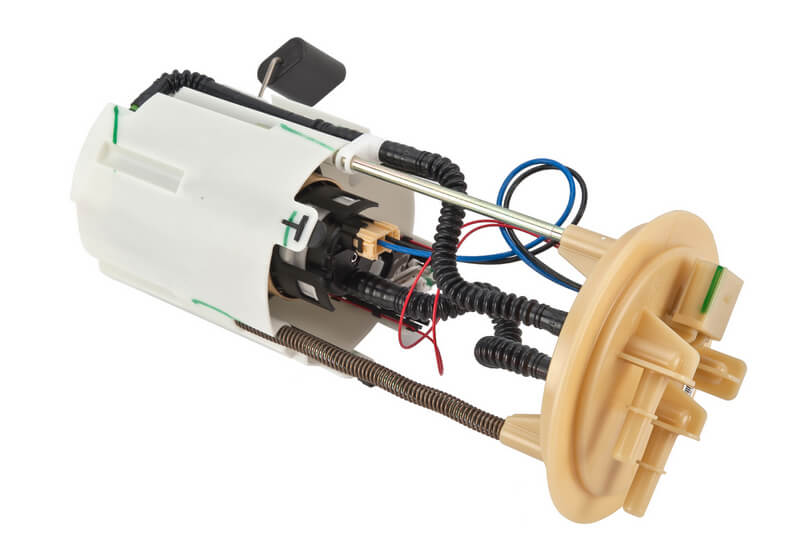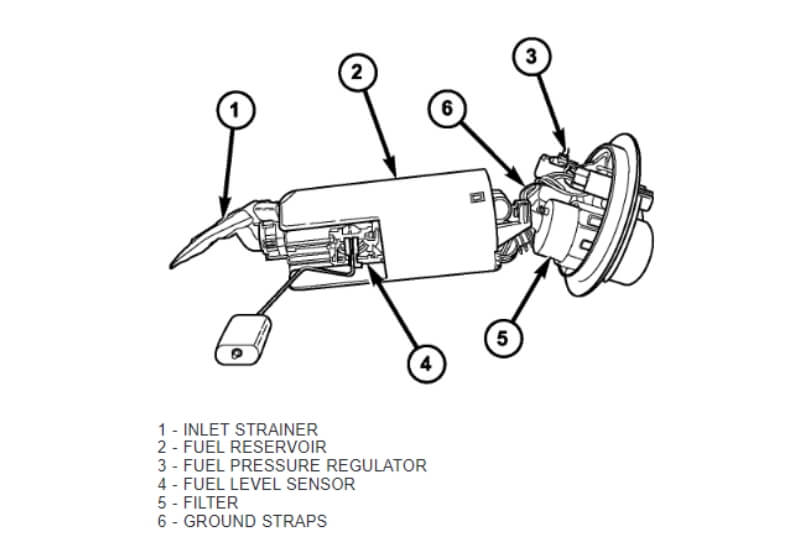
Did you know that a simple fuel pump is one of those components that all petrol-powered cars use? The way engines get their fuel has changed a lot over the years, developing from simple carburetors to advanced injection systems. Besides the technical aspects, some cars use gasoline, while others run on diesel fuel. But, despite their differences, all these variants still need something that delivers the fuel from the tank to the engine itself. This is where the fuel pump steps into the play and takes care of things. With such a simple task to perform and a design that has been refined over the years, they are usually very reliable. However, like any other mechanical component, it can still go bad once in a while. If this is your case and you suspect that your car might have fuel pump problems, this article is for you. Read on to learn how a fuel pump works and how to start a car with a bad fuel pump.

What Does a Fuel Pump Do?
Let’s start by explaining the anatomy of a fuel pump and exploring the functions of various components connected to it. The fuel pump has only one job - to suck the fuel from the tank and move it towards the engine. On older cars, this was a mechanical device attached directly to the engine camshaft. However, most cars today use an electrical pump located inside the fuel tank itself. The core of each pump is an electric motor that spins at high speeds when connected to a power source. The motor is inside a casing, which has a specially designed inlet and outlet that ensure steady flow and pressure. While flowing through the pump itself as it works, the fuel acts as a lubricant and coolant. When you turn on the ignition, it starts spinning and sends pressurized fuel through the fuel lines up to the injectors.
While the fuel may seem like a clear fluid, it may still contain contaminants like dirt or rust. At the inlet side of the pump, there is a strainer that prevents the entrance of any larger particles that could cause significant damage. The fuel filter that sits behind the pump removes any remaining traces of dirt that could clog fuel lines and sensitive injectors. Some cars have a sensor integrated into the filter which monitors the back-pressure that happens as the fuel flows. If the pressure becomes too high, the car will warn the driver by illuminating a warning light on the dashboard.

Symptoms of a Bad Fuel Pump
Despite the overall simplicity, determining whether the fuel pump is faulty is anything but a straightforward operation. This is because a bad pump has symptoms similar to issues with various other systems. However, in all cases, the bottom line is that the gasoline will not reach the engine with an appropriate pressure if the fuel pump is not working. As a result, your car will not start, although it is cranking just fine when turning the key.
However, these symptoms can also be related to something else like a bad sensor, dead coil packs, or an immobilizer system related problem. To make things worse, the fuel pump might be worn out. This means it will work, but will not deliver sufficient amounts of fuel. In cases like this, the car will start and run on idle but struggle and jerk at high speeds and under loads.
You can try isolating the fuel pump as a likely cause of engine issues by using several simple tricks. One of the easiest things is to listen if there is a buzz coming from the back of your car when you turn the key to the ON position. This is the sound the fuel pump makes when it starts working. Take the filler cap off and check if you can hear the pump running, while somebody is cranking the engine.
You can also use starter fluid to see if it makes any difference. Take the intake hoses off and spray a slight amount of starter fluid into the intake manifold while cranking. If the engine starts and runs for a brief time, you are definitely having a fuel related issue.
How to Start a Car if the Fuel Pump is Not Working?
Having concluded that the fuel pump is not working, you can try several things that might get it going again. Being nothing more than an electric motor with several moving parts attached to it, the pump can get jammed. This can happen if something prevents rotating parts from moving or because of excessive wear. In a situation like this, take a rubber or wooden mallet and gently tap the bottom of the fuel tank. Sometimes, this will be enough to get the pump working again.
Another common problem that might put the fuel pump out of action is various electrical issues. This can be something as simple as a wire connector that is loose or has a corrosion build-up on it. Depending on the location of the tank, you will find the connector either under the seat or beneath the trunk. You can also check if there is a flow electrical current using a test light or another suitable diagnostic tool. Blown fuses, broken wires, or a faulty fuel pump relay are some usual problems. When in doubt, take a look at the fuel pump wiring diagram found in your car's repair manual and make sure every component in the circuit is working fine.
In case you can’t track down the issue, try ‘borrowing’ the electricity from some other source. As the pump doesn’t need much electricity, you can use a wire that powers something like a fog light.
There are situations where the pump is working fine, but the fuel is still not reaching the engine. This can be because of a clogged strainer, a dirty filter, or some physical obstructions inside the fuel lines. Any of these issues can affect the fuel flow or even stop it at all. However, if cases when the fuel pump is broken beyond repair, none of these methods won’t help. In cases like that, the only option you have left is to call a tow truck.
In Brief...
The fuel pump is one of the vital components in every vehicle that has an engine. If it goes bad, your car may not start or it will have problems getting up to speed. The core of every fuel pump is an electric motor that drives several moving parts, which can fail with time. The pump that is not working will prevent the engine from starting, as it won’t be getting any fuel. Still, some simple things like clogged filters and fuel lines or an electrical issue can cause a similar effect. Many times, checking these potential failure points could help you get back on the road instead of a tow truck.
